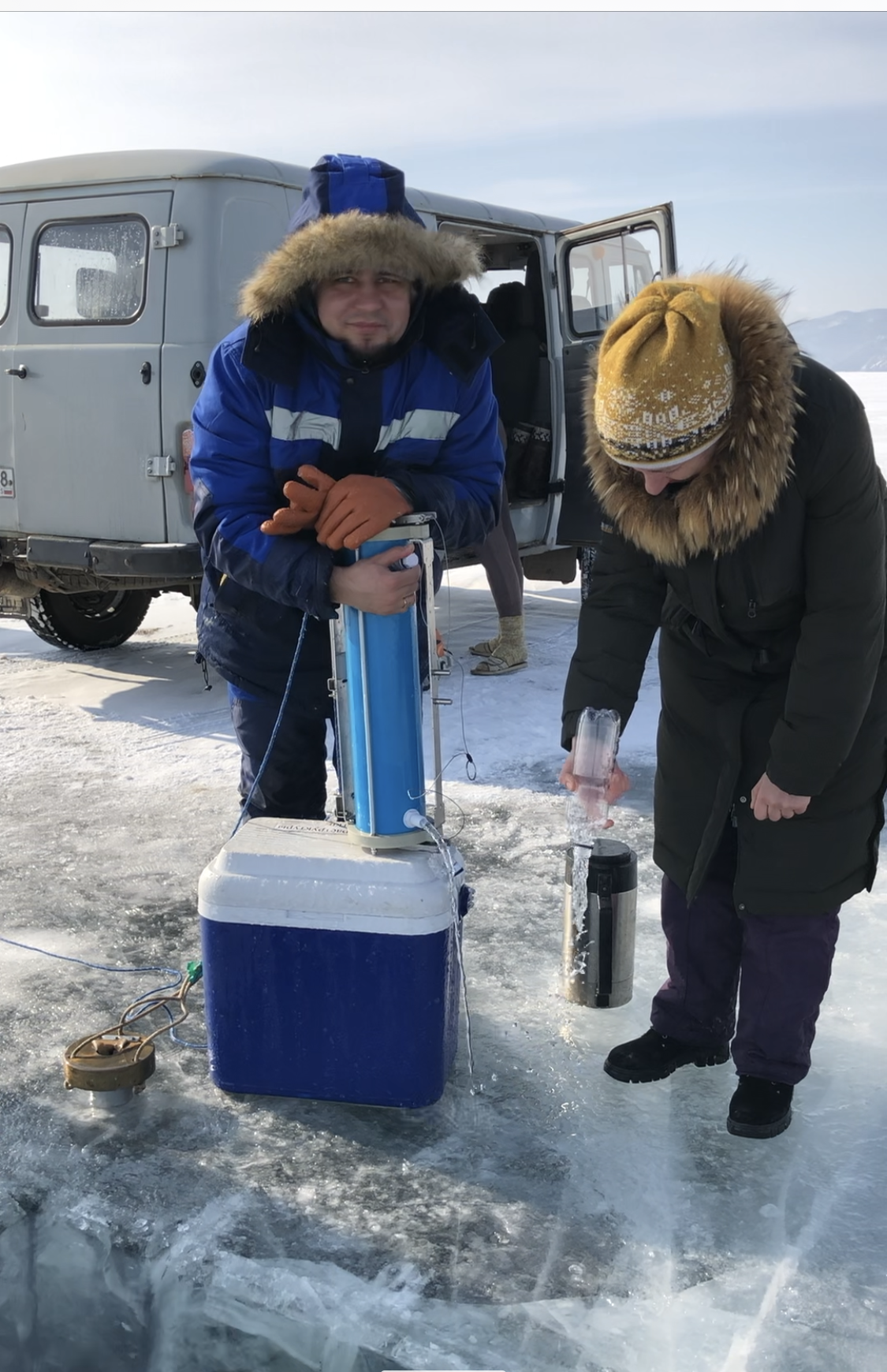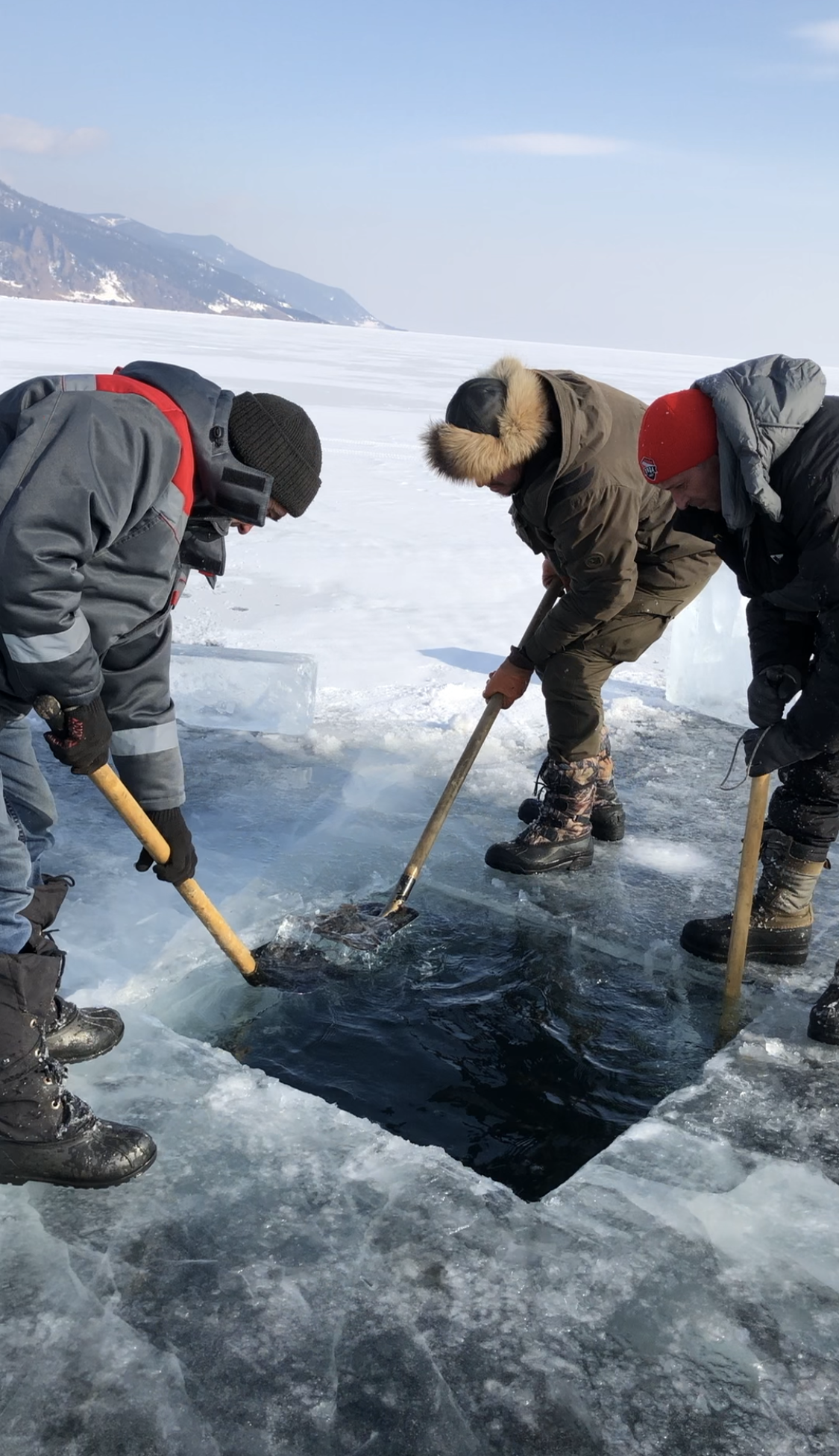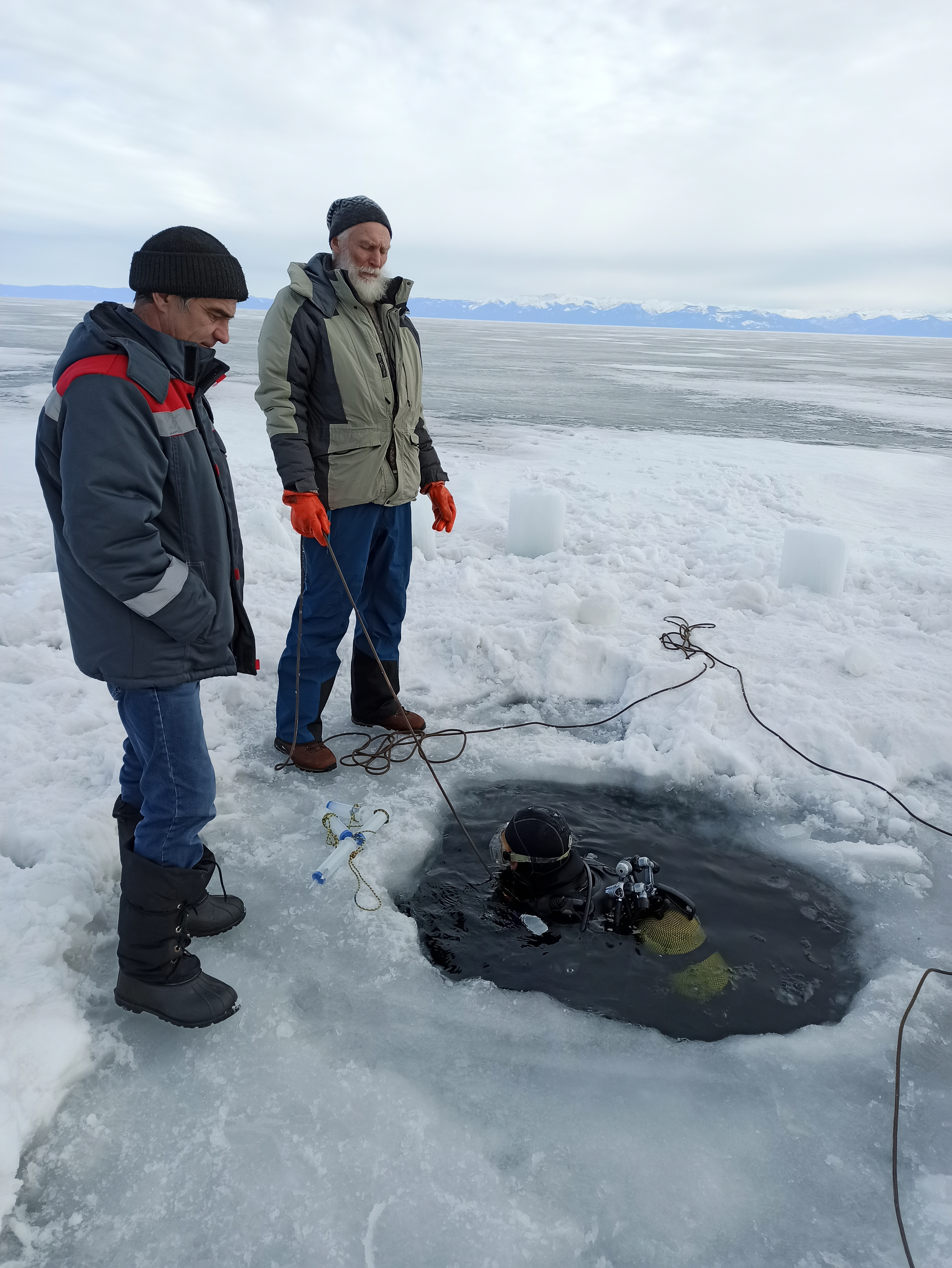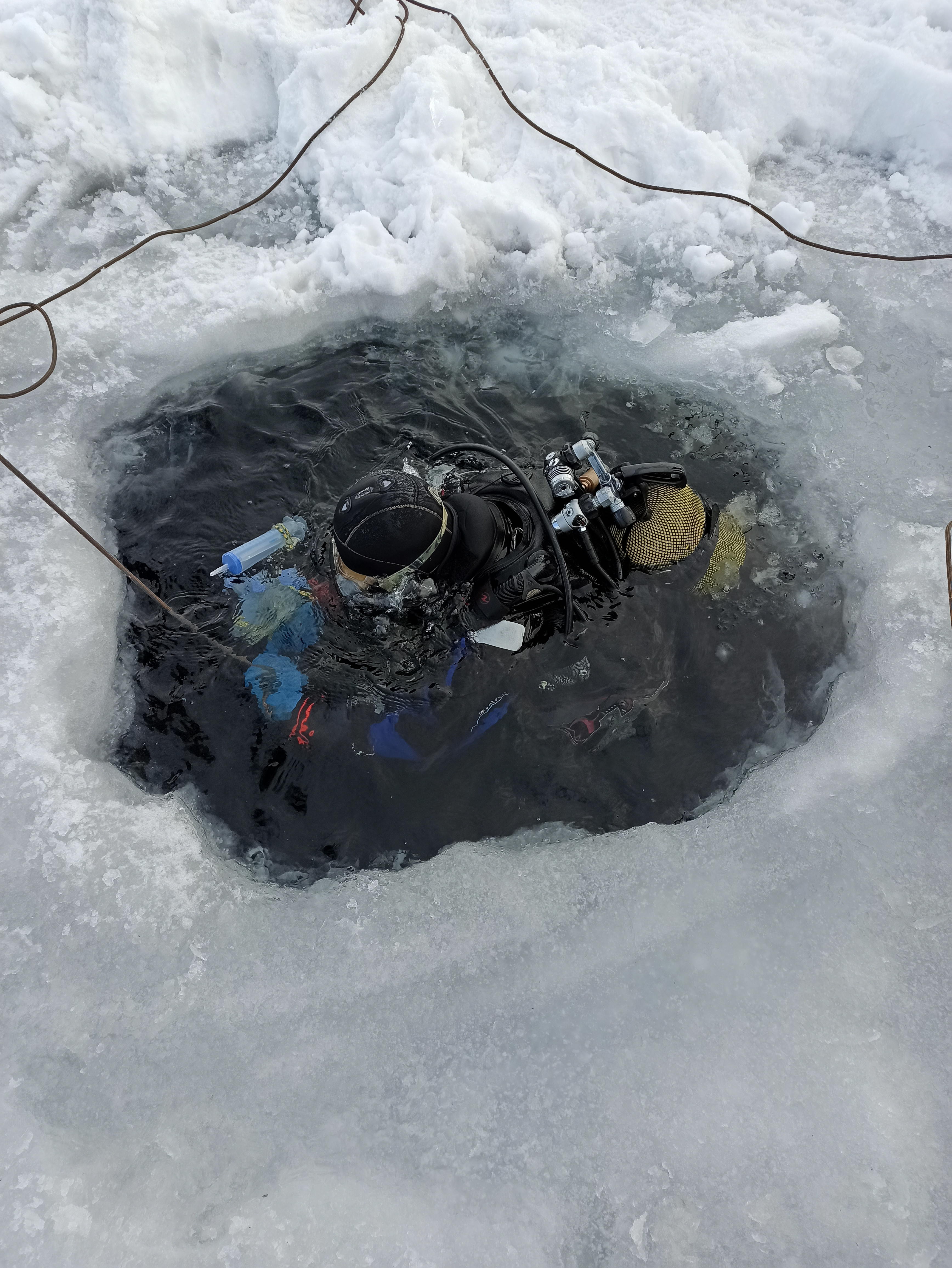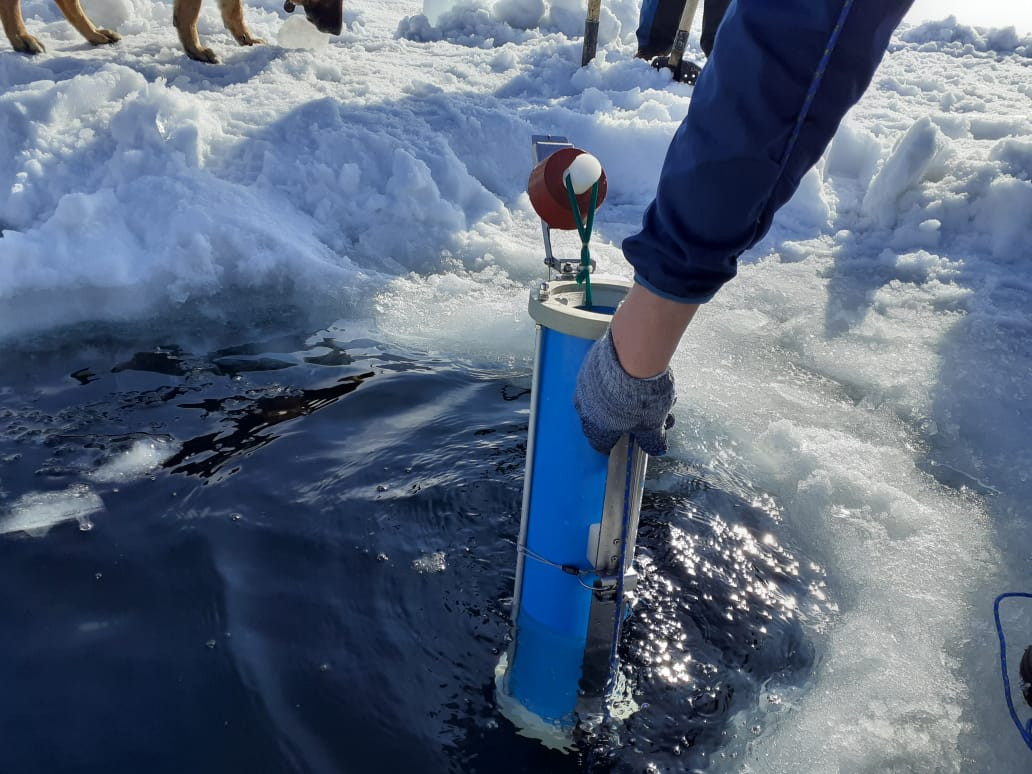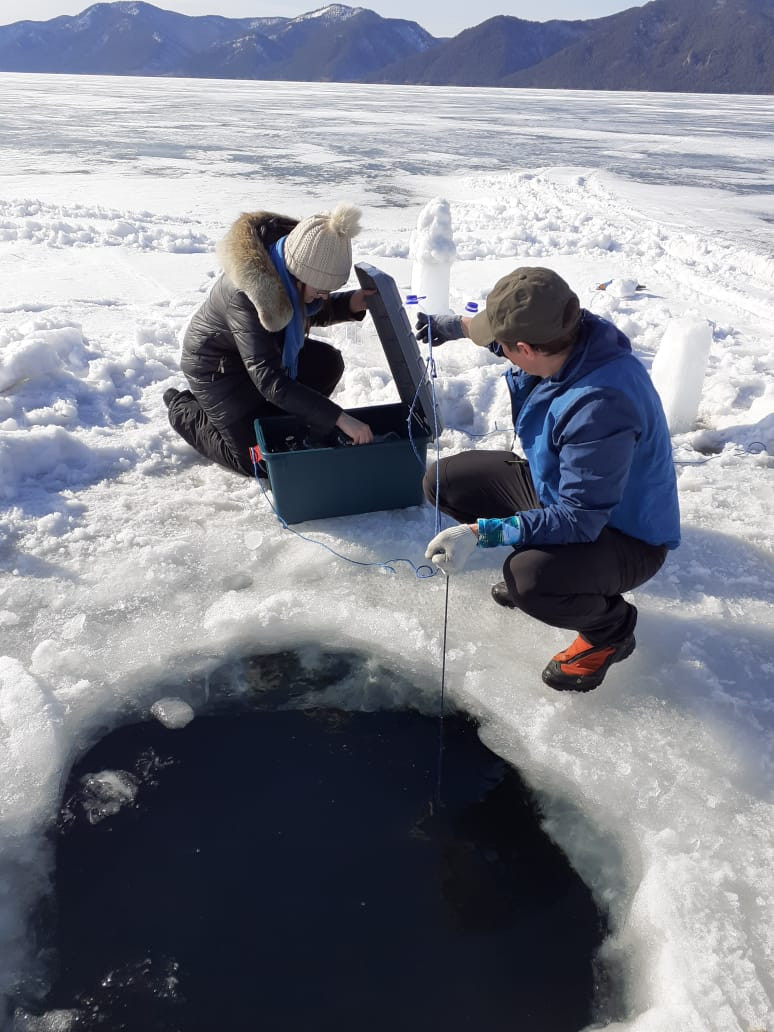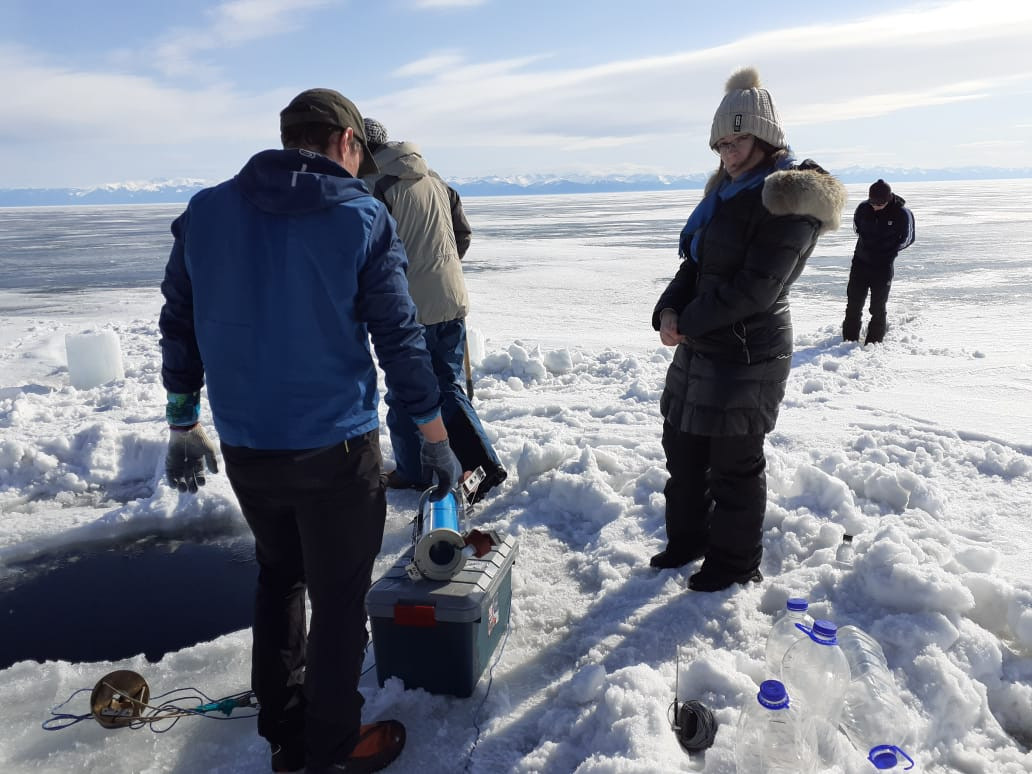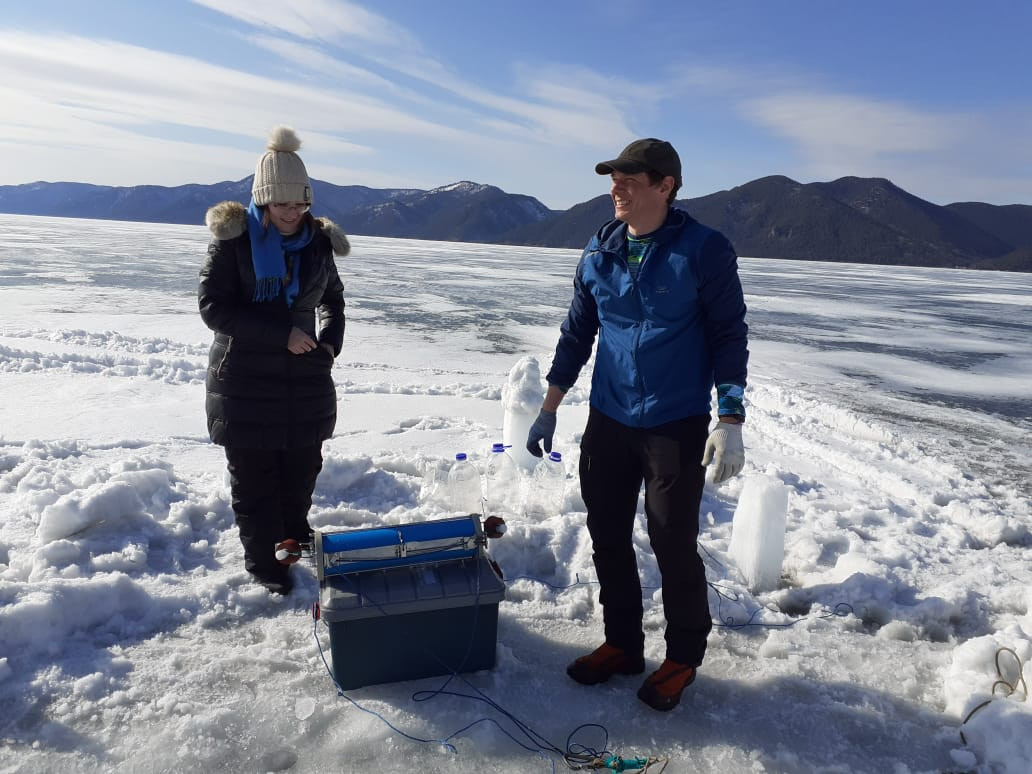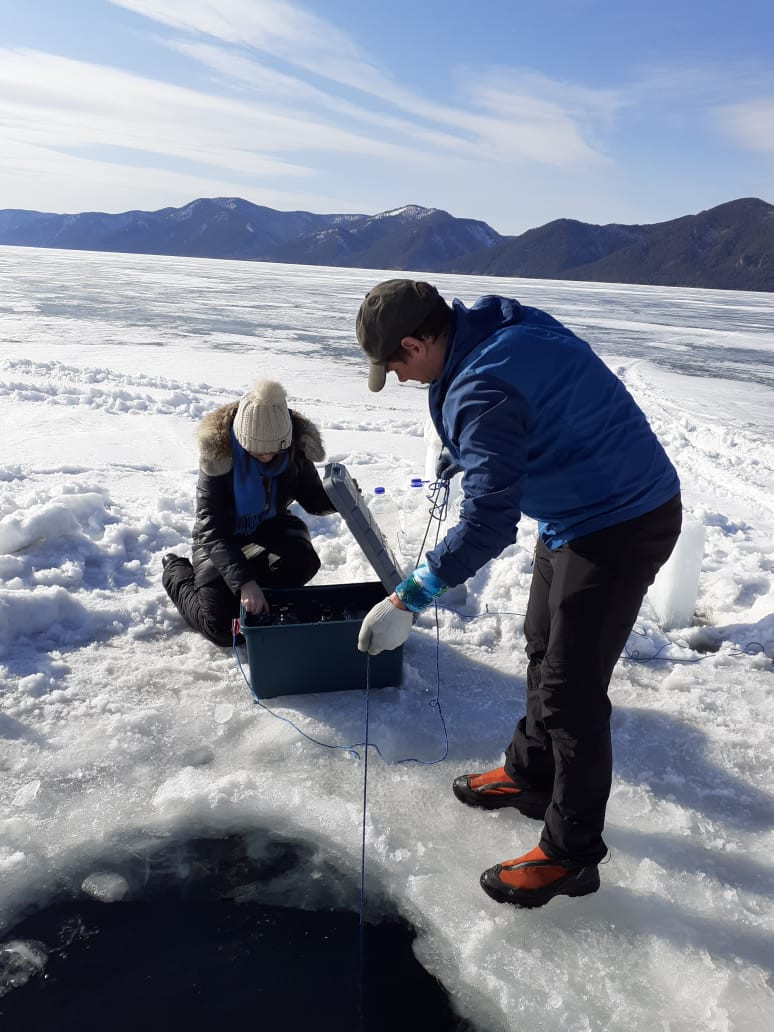Expeditions to the Bolshiye Koty settlement, February 20, March 16-17, 2020
The expeditions within the framework of the program “Studies of Evolutionary, Ecological and Molecular-Biological Aspects of Silica-Dependent Chromista as the Main Participants of the Silica Cycle in Aquatic Ecosystems” was carried out on February 20 and March 16-17, 2020, in Southern Baikal, near the Bolshiye Koty settlement.
The aim of the expeditions was to study the formation and development dynamics of under-ice algo-bacterial communities by methods of microscopy, cultivation, and molecular biology.
During the expeditions, under-ice samples were taken using diving equipment, with syringes from the lower surface of the ice. Water samples (0-25 m) were taken using a Niskin bathometer. Phytoplankton samples were taken with Juday net to determine species composition, the abundance of phytoplankton and bacterioplankton as well as to cultivate diatoms. The express method (based on light microscopy of samples) ensured the study of the composition of the dominant species in early spring phytoplankton.
The studies revealed that in February and March the Aulacosiera islandica diatoms dominate the under-ice fouling. In the water column, at depths from 0 to 25 m, Fragilaria radians and Nitzschia graciliforms diatoms, Dinobryon cylindricum chrysophytes, and Monoraphidium griffithii chlorophytes massively develop in February, and the Synedra acus, Synedra ulna (95%), and Aulacosiera baicalensis (2-3%) diatoms, Dinobryon cylindricum chrysophytes, Peridinium baicalense and Gymnodinium baicalense dinoflagellates – in March.




